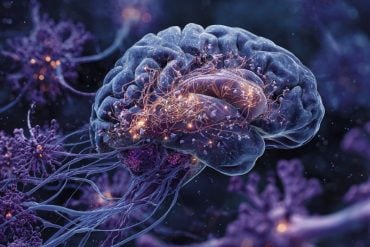Summary: New research shows that early life stress disrupts dopamine signaling, altering social motivation and behavior. Scientists found that mice raised in stressful conditions were less likely to engage in social interactions compared to those with enriched experiences.
The study identifies a weakened neural pathway between the ventral tegmental area and the basolateral amygdala as a key factor. Using advanced techniques to activate or silence dopamine neurons, researchers could artificially restore or suppress social motivation in mice.
This suggests that social avoidance behaviors may stem from disrupted neural circuits rather than inherent personality traits. The findings could inform new treatments for individuals with social difficulties linked to early life trauma.
Key Facts:
- Dopamine and Social Behavior: Early life stress reduces dopamine neuron connections between the ventral tegmental area and basolateral amygdala, impairing social motivation.
- Experimental Control of Behavior: Activating dopamine neurons restored social behavior in stressed mice, while silencing them caused socially engaged mice to become avoidant.
- Implications for Human Health: Understanding these neural circuits may help develop interventions for social difficulties linked to childhood neglect or trauma.
Source: Tufts University
Neuroscientists have new insights into why previous experiences influence future behaviors.
Experiments in mice reveal that personal history, especially stressful events, influences how the brain processes whether something is positive or negative. These calculations ultimately impact how motivated a rodent is to seek social interaction or other kinds of rewards.

In a first of its kind study, Tufts University School of Medicine researchers demonstrate that interfering with the neural circuits responsible for emotional decisions can increase or decrease socially avoidant behaviors in mice, regardless of whether they had enriched or adverse experiences as pups.
The findings, appearing February 13 in the Journal of Neuroscience, suggest that antisocial behaviors associated with childhood neglect or related forms of abuse may result from dysfunctional dopamine signaling in the midbrain.
Many aspects of motivation involve dopamine, the neurotransmitter responsible for pleasurable feelings. When a mammal does something that enhances the chances of survival, such as eat a tasty meal or engage in sex, dopamine levels surge.
In humans (and mice), positive social interactions are generally rewarded by a burst of activity in the ventral tegmental area—a pathway of dopamine-releasing neurons. It connects the basolateral amygdala, a clump of nerves in the midbrain where emotions are processed, to the prefrontal cortex, where the brain makes critical decisions surrounding emotion and motivation.
“If people with early life stress are losing the ability to send information from parts of the brain that are needed for motivated behaviors, it made sense that we’d see less crosstalk between these two areas,” says first author Bradly Stone, who conducted the research as a Tufts postdoctoral scholar.
“The result that turned our heads was that early life stress reduces the number of dopaminergic neurons between the ventral tegmental area and basolateral amygdala, suggesting that network architecture is impaired.”
To test this hypothesis, Stone and his colleagues leveraged cutting-edge laboratory techniques that allowed them to artificially activate or silence dopamine inputs into the basolateral amygdala from the ventral tegmental area.
They applied this to a classic behavioral protocol in which a mouse is given the choice to investigate chambers with either a toy or a stranger mouse. Mice with carefree early days visited the stranger mouse as expected.
However, mice that experienced maternal neglect primarily opted to do nothing or interact with the toy. This was only revealed when the investigators activated the dopaminergic neurons between the ventral tegmental area and basolateral amygdala.
Importantly, when dopaminergic neurons were turned off in animals with carefree early days, they started behaving like animals who grew up with maternal neglect.
“This experiment was a beautiful part to this story that really made me believe in the work,” says Stone.
“It’s evidence that social avoidance is governed by a delicate balance of interconnected neural elements and early life stress shapes these connections in a nuanced way that impairs their ability to function.”
About this neurodevelopment and social neuroscience research news
Author: Jennifer Rosenberg
Source: Tufts University
Contact: Jennifer Rosenberg – Tufts University
Image: The image is credited to Neuroscience News
Original Research: Closed access.
“Early Life Stress Impairs VTA Coordination of BLA Network and Behavioral States” by Bradly Stone et al. Journal of Neuroscience
Abstract
Early Life Stress Impairs VTA Coordination of BLA Network and Behavioral States
Motivated behaviors, such as social interactions, are governed by the interplay between mesocorticolimbic structures, such as the ventral tegmental area (VTA), basolateral amygdala (BLA), and medial prefrontal cortex (mPFC).
Adverse childhood experiences and early life stress (ELS) can impact these networks and behaviors, which is associated with increased risk for psychiatric illnesses.
While it is known that the VTA projects to both the BLA and mPFC, the influence of these inputs on local network activity which govern behavioral states – and whether ELS impacts VTA-mediated network communication – remains unknown.
Our study demonstrates that VTA inputs influence BLA oscillations and entrainment of mPFC activity in mice, and that ELS weakens the ability of the VTA to coordinate BLA network states, while also impairing dopaminergic signaling between VTA and BLA.
Optogenetic stimulation of VTABLA terminals decreased social interaction in ELS mice, which can be recapitulated in control mice by inhibiting VTA-BLA communication.
These data suggest that ELS impacts social reward via the VTA-BLA dopamine network.







